
Cats may be one of the most popular pets worldwide, but even they have reputations (mostly with non-cat people). Felines are known for indifference, sass, and even attitude. Cartoons, comics, and movies portray them as impossible to reason with, but if you ask a cat owner, they’ll assure you cat discipline exists. Here’s the catch: you need to know how to discipline your cat — safely and properly — for that training to stick. With these seven simple tips and tricks, though, you’ll be on your way to perfect feline behavior.
- Rule out medical concerns as a cause for misbehavior
- Training cats looks different from training dogs
- Environmental problems are the root of many behavior concerns
- Keep training sessions short and straightforward
- A technique called ‘withdraw and redirect’ is more effective than punishment
- Praise and rewards are motivating to most cats
- Outsmarting the feline brain
- Admit when you need help
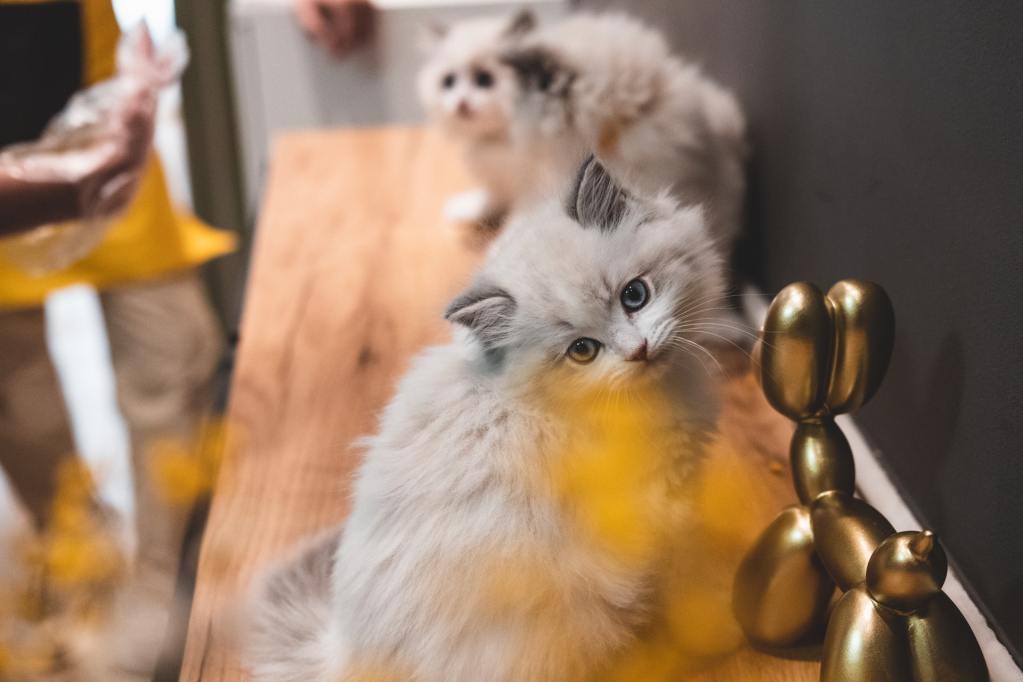
Rule out medical concerns as a cause for misbehavior
Surprising as it sounds, the source of a lot of cat misbehavior has roots in medical conditions. Cats may stop using the litter box, demonstrate new aggression, or start hiding in unexpected places — all from changes inside their body. So, before you start wondering how to punish your cat, make an appointment with your veterinarian. You may find a medical cause for the behavior. If not, you’ll get peace of mind and can move on to further tips on cat discipline.
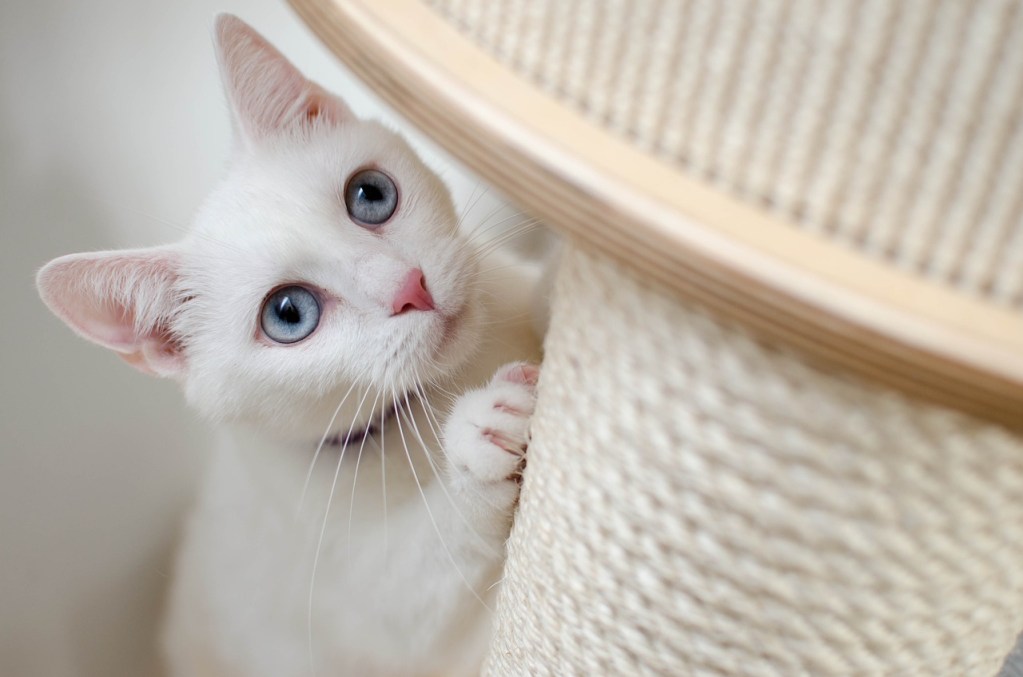
Training cats looks different from training dogs
Dog training is extremely normalized, but it can be a bit tricky to find resources for training a cat away from unwanted behaviors. After all, this requires different methods and techniques! Dogs learn to recognize vocal commands and hand signals. Cats? They’re not the biggest fans of those methods.
That isn’t to say you can’t clicker train cats because you can. However, your cat isn’t likely to care for clicking sounds or changes in your tone of voice. Cat discipline is a little trickier — and it requires a deeper level of patience. Deep breath–you can do this!
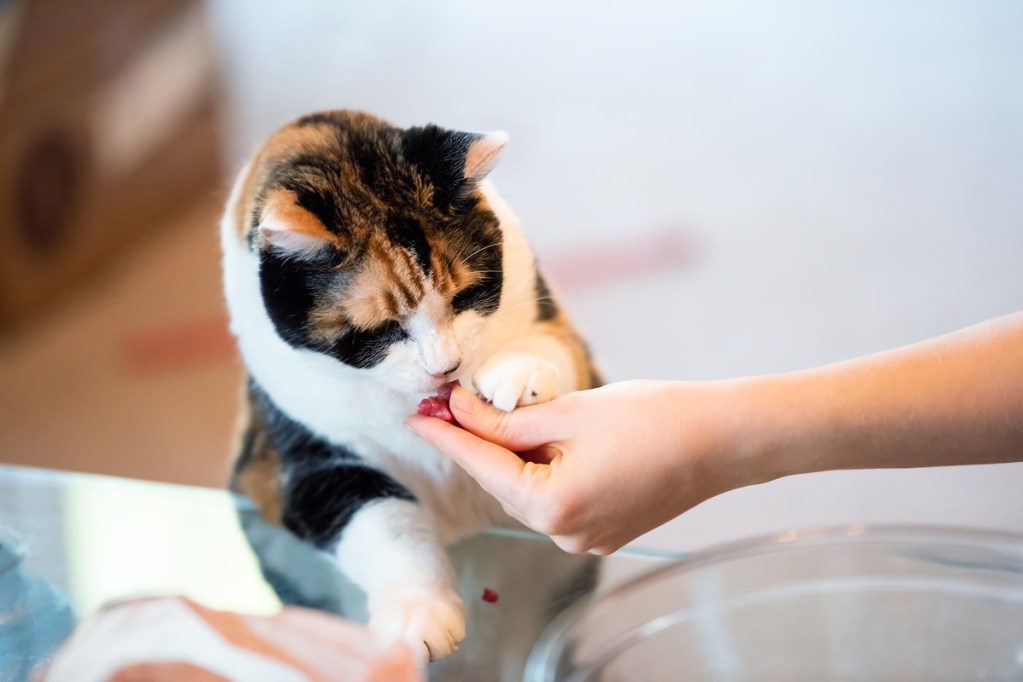
Environmental problems are the root of many behavior concerns
People get frustrated with scratched furniture, cats climbing the curtains, and accidents outside of the litter box. They clamor to know how to punish the cat. What is the real secret behind most cat misbehavior, though? It’s problems in the house! That’s why you should ask yourself:
- Does the litter box get cleaned regularly?
- Is the litter — or box — the type your cat prefers?
- Are there enough scratching posts?
- Do you have cat trees to provide elevated climbing places?
- Are you playing with your cat frequently enough?
- Are there any new changes in the home, like a new family member or a recent loss?
Cat discipline goes out the window if the house isn’t set up to cater to feline needs. This is why one swap in your daily routine could change everything about your cat’s behavior.
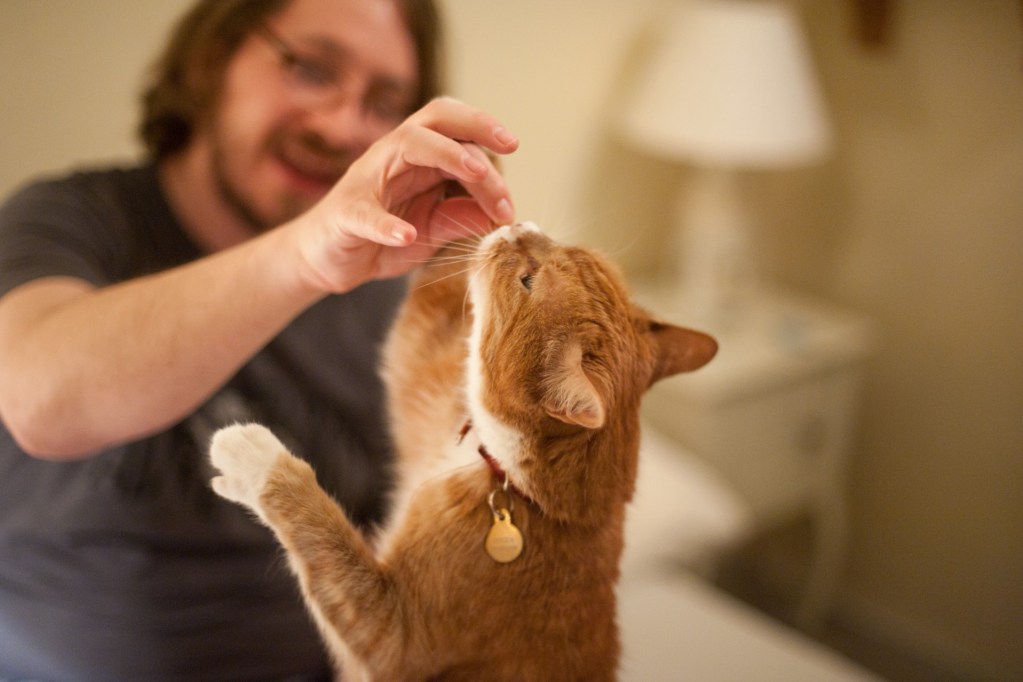
Keep training sessions short and straightforward
Once you’ve identified the behaviors of your kitty you’d like to improve or eliminate, you may decide to try more intentional training. Eliminating unwanted behaviors is better solved with withdrawal and redirection (more on that below), but encouraging new, positive behaviors can be done through training. Even though the specifics of your feline’s training depend on what you’re hoping to teach your cat, there are a few things to keep in mind no matter what.
Firstly, keep your training sessions short. Cats are more likely to lose interest or become frustrated when practicing the same thing for a long time, so aim for a three to five-minute window of time. You can always add a second (and, later on, a third) session per day, according to the cat trainer and Associate Certified Applied Animal Behaviorist behind Cat School, so be sure to end each session swiftly and on a positive note.
Additionally, keep training sessions straightforward by eliminating any nearby distractions, like food bowls or other animals, and starting with something easy. You should always work your way up to more challenging tasks gradually so as not to frustrate your feline.

A technique called ‘withdraw and redirect’ is more effective than punishment
Even though cat training and dog obedience training are vastly different, there is one thing they have in common: punishment is a no-no! Not only is punishing your pet ineffective at changing their behavior, but it can also break the trust in your relationship. Instead, focus on positive reinforcement with wanted behaviors and changing negative behaviors without punishment. One of the simplest ways to change your cat’s behavior over time is to withdraw or redirect their attention.
When playing with your kitten, do they latch on with their claws or bite? If so, this is because young kittens mock-attack their mothers and siblings. But here’s where it differs: Mom corrects them with a hiss or a nip. You can’t do the same, but you can mimic that cat’s discipline by reacting to the bite with a loud “ow,” stopping engagement, and walking away. Your kitten’s brain will realize something went wrong, and they’ll start to get the message. Remember, this will take time and repetition!
Are you looking for ways to stop cats from scratching furniture? Instead of yelling (something that never works), gently move them to their approved scratcher. Sprinkling catnip over the scratcher will increase their interest. That kitty brain will get the idea pretty quickly. This will be most effective if you’re able to interrupt their scratching in action, even if you have to do it over and over again for them to understand.

Praise and rewards are motivating to most cats
No one likes to punish their cat. Inappropriate punishment can lead to anxiety, fear, avoidance of you, or even worse behaviors. Instead of focusing on cat discipline, aim to reward your cat’s good behaviors. Utilize treats during cat training, as they make an effective motivation. Keep them on hand for when you see your feline family member doing the things you want:
- Playing nicely with their toys
- Using the litter box
- Scratching their cardboard scratcher
- Napping on the cat tree
As your cat realizes those “normal” activities yield praise and treats, they’ll repeat them. (After all, who doesn’t like snacks and cheers?)
If you’d like to learn more about your kitten or need a guide on how often should kittens be fed, we’ve got you covered.
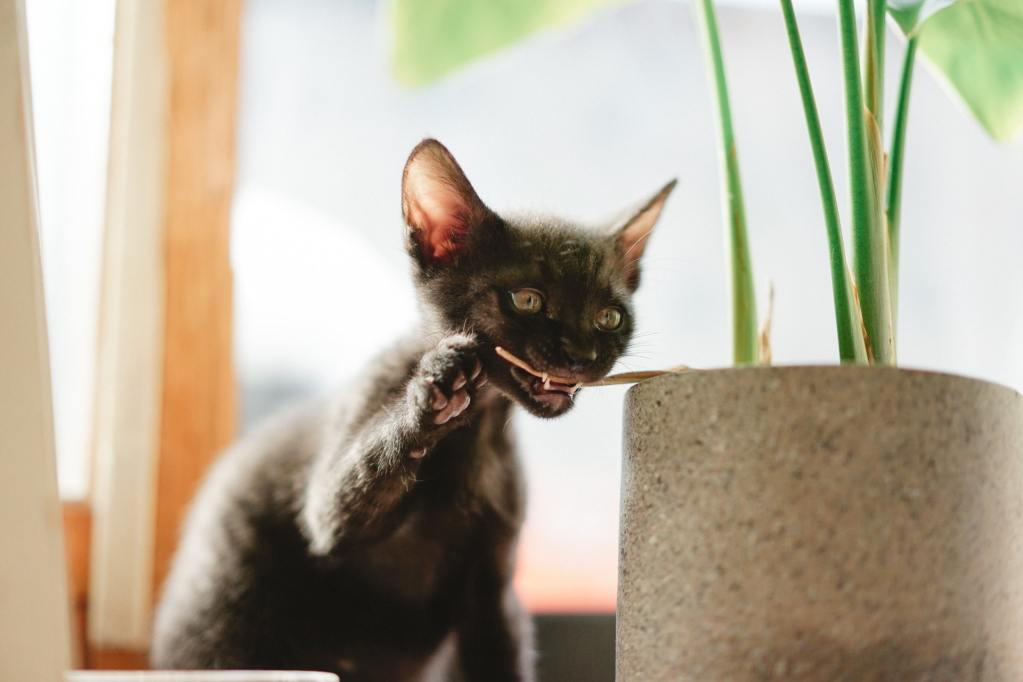
Outsmarting the feline brain
Sometimes, you need to think smarter than your cat. It’s a subtle way to redirect your cat and encourage them away from destructive behavior.
For instance, for that cat who believes the couch is a scratching post? Drape a loose blanket over the arm of the sofa. The fabric will fall each time they try to sharpen their claws, creating a subtle form of cat discipline. Foiling the behavior will make it less desirable, which can drive them to the sturdy, reliable scratching post.
Is your cat a counter-jumper? Place double-sided tape on the counter where your cat’s feet land. The tape’s harmless, but cats hate the sticky sensation on their paws. Your cat learns to avoid the area — especially if you provide a cat-safe place for them to climb as an alternative.

Admit when you need help
There’s no shame in admitting you’re in over your head. If you’ve checked every other box in setting up cat discipline and nothing’s working, it’s time to seek outside assistance. Professional cat trainers do exist. They excel at unraveling the underlying cause of your cat’s behavior, and they can guide you in establishing a proper program of safe training.
Never give up and accept bad behavior. It’s unfair to you and your cat if you’re struggling to find a safe way to redirect your cat, turn to the experts. If you’re struggling to find resources, ask your vet!
No one likes putting up with bad behavior. Luckily, most of the time, those unwanted discipline problems clear up with a little work. Take a quick look through the house and make sure you are not part of the problem. Then, focus on the good things your cat’s doing. Slowly, over time, your cat will fall in line. And don’t forget to ask for the vet’s or other expert’s assistance when it’s needed. You’ve got this!
Editors' Recommendations
- Why do cats fight? They’re not just being jerks
- Why do cats roll in dirt? 10 reasons for their dust bath
- Is your cat obese? 5 ways to help them slim down
- Why do cats eat plastic (and when you should be concerned)?
- When can kittens eat dry food? The lowdown on what you should feed them


